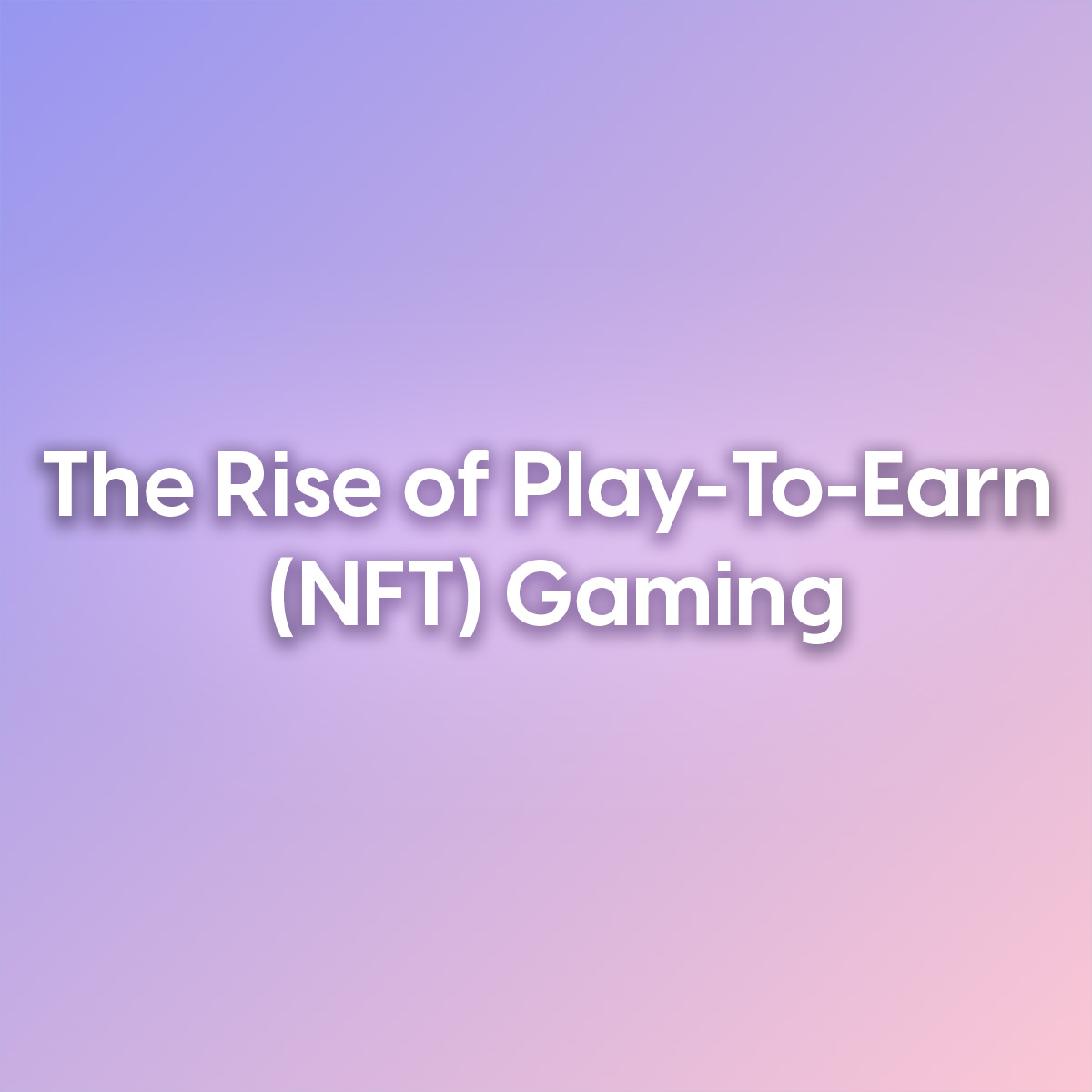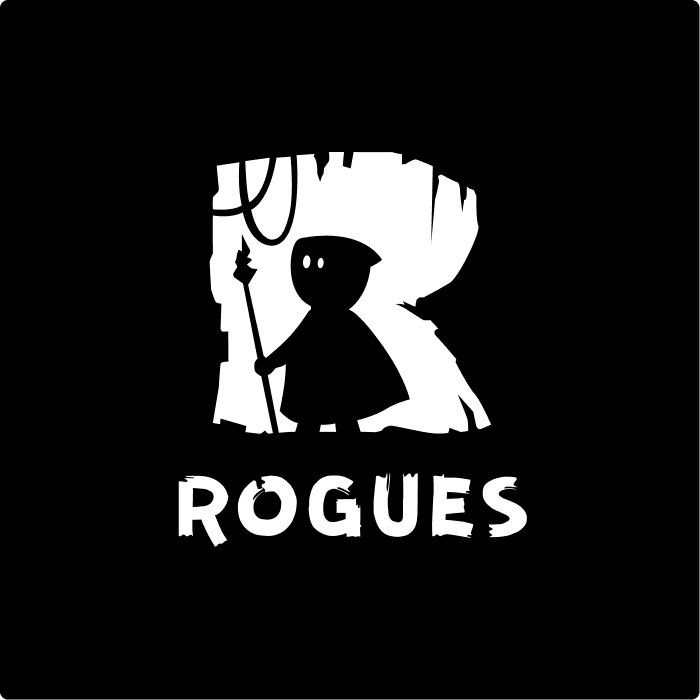Conceptually, Play to Earn (P2E) gaming has been around for a while. All of the old-school gamers reading this should remember how back in the day you could buy Runescape gold from sketchy sellers on Ebay.
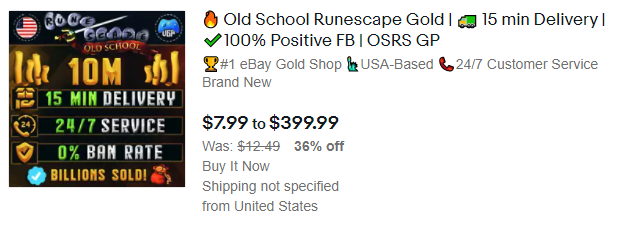
High level World of Warcraft accounts could (and still can) be bought for a few hundred dollars online, and anyone who has ever played CS-GO will know about the ridiculous amounts of money that weapon skins were sometimes sold for. So what changed? What’s all this newfound hype about ‘play to earn’ gaming all about?
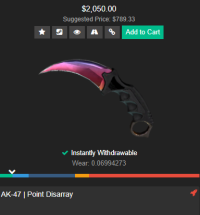

The simple answer is that it all boils down to blockchain technology, decentralisation and digital ownership. In the old standard of gaming, whenever you earnt tokens (gold or gems), owned items or skins, you never really ‘owned’ them, you were basically given permission by a game company to use them within the limitations of their Terms of Service. You know, that pop-up that no one ever reads before clicking “of course, I accept!”.
Ownership can be defined as “the state or fact of exclusive rights and control over property”. Runescape never really wanted you to sell their gold for cash, so they never facilitated such a process and would even go as far as banning people that were suspected of doing so. Selling Counter Strike skins was also complicated and risky enough that separate companies were needed to act as a middleman between buyer and seller.

And through all this, millions of people (including myself) got scammed along the way. Without facilitation from the game companies, secondary marketplaces were often reliant on trust and anonymity, literally a scammers dream. Yet still, the game companies had no way of profiting from secondary market sales for cash, so they did whatever they could do to prevent it from occurring.
Let me just bash on this outdated concept one more time before moving on, because one day we will laugh at this concept and how disadvantaged gamers really were. You see, hard-core gamers could sometimes spend many years of their time and thousands of real life dollars into these games, growing their characters and virtual bank accounts to the absolute maximum. Imagine, after all those years of investment, a player wanted to transition to a new phase in their life, or wanted to move to a different game, what would happen to their investment? In the old system, nothing happens, it’s lost. Sure they could attempt selling their stuff through sketchy methods and risk getting banned or scammed, but most of the time, players had to cut their losses and leave it all behind.
But then came the blockchain. The first decentralized game that I was able to find in my research, was built in 2016 on the Ethereum blockchain.
https://opensea.io/collection/wrapped-etherization

‘Etherization’ was a one-man hobby project, that inadvertedly woke up the world to the many possibilities of combining blockchain with gaming. In this game, you could buy one of the 1,156 playable cities with Ethereum (ETH). Once you owned some land, you could then build structures, like a barracks, which would cost ETH to construct. Owning a barracks would then allow you to make troops (by spending ETH), but it would also generate passive ETH whenever any other player spent ETH to buy troops. Using your troops, you can then choose to invade other players’ countries, and if you win the battle, you will conquer all of the ETH that they have in their treasury.
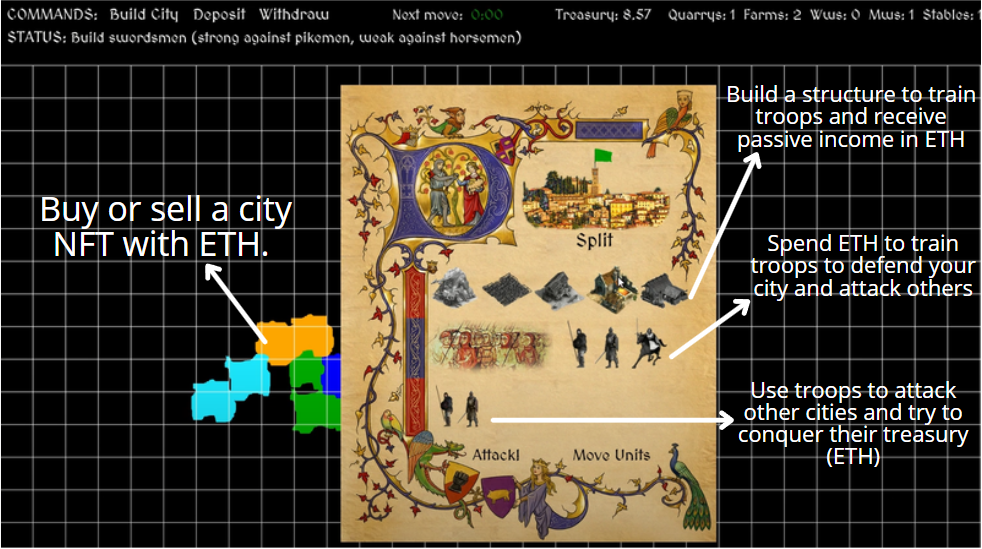
Seems simple enough right? You have your basic supply and demand factors that give people ways of earning and spending ETH, allowing players to trade their tokens for digital assets that generate more tokens. NFT’s had only just been invented a year earlier, but the creator of this game would become the first developer to introduce this new technology as an in-game mechanic. Because in order to join the game, players had to buy an NFT city, of which there were a limited amount.
Yet, the biggest innovation that Etherization brought to the world was that the in-game tokens were easily sold for real-life money on any cryptocurrency exchange. Players who invested time and money strategizing about the best way to be successful, could at any point cash out on their time/money investment in order to make a profit. All of this facilitated through the blockchain, without the risks of being scammed or banned. And better yet, whenever a player was done playing, they could sell their NFT city to a prospective player that wanted to get in on the fun.
Compared to the old gaming model, intertwining real-life economics and digital ownership within games now seems like such a straight-forward improvement. Especially with the approaching metaverse innovations, people will increasingly spend their time in a digital world. Yet as obvious as this solution seems now, it still took a few years before the games and worldwide blockchain understanding improved to the point where mass adoption became within reach. As new play-to-earn indie games seem to pop up almost daily, and industry giants like Activision and Ubisoft are scrambling to find a way to break into this innovation, there are still many kinks and problems that will need to be overcome before NFT/P2E gaming will become the industry standard.
